Perfect as an appetizer or side dish, this coconut shrimp recipe is always a crowdpleaser. All you need are a couple of pantry staples, and you can enjoy these delicious pieces of fried shrimp in no time. Crispy, crunchy, and sweet, you’re going to wish you made more as these shrimp fly off the plate.
While deep frying may seem intimidating at first, it’s actually shockingly simple! With my step-by-step instructions below, you’ll be making these fried coconut shrimps in no time. Want to reuse the oil and fry something else? Try my Fried Chicken recipe!
WHAT YOU NEED TO MAKE THIS RECIPE
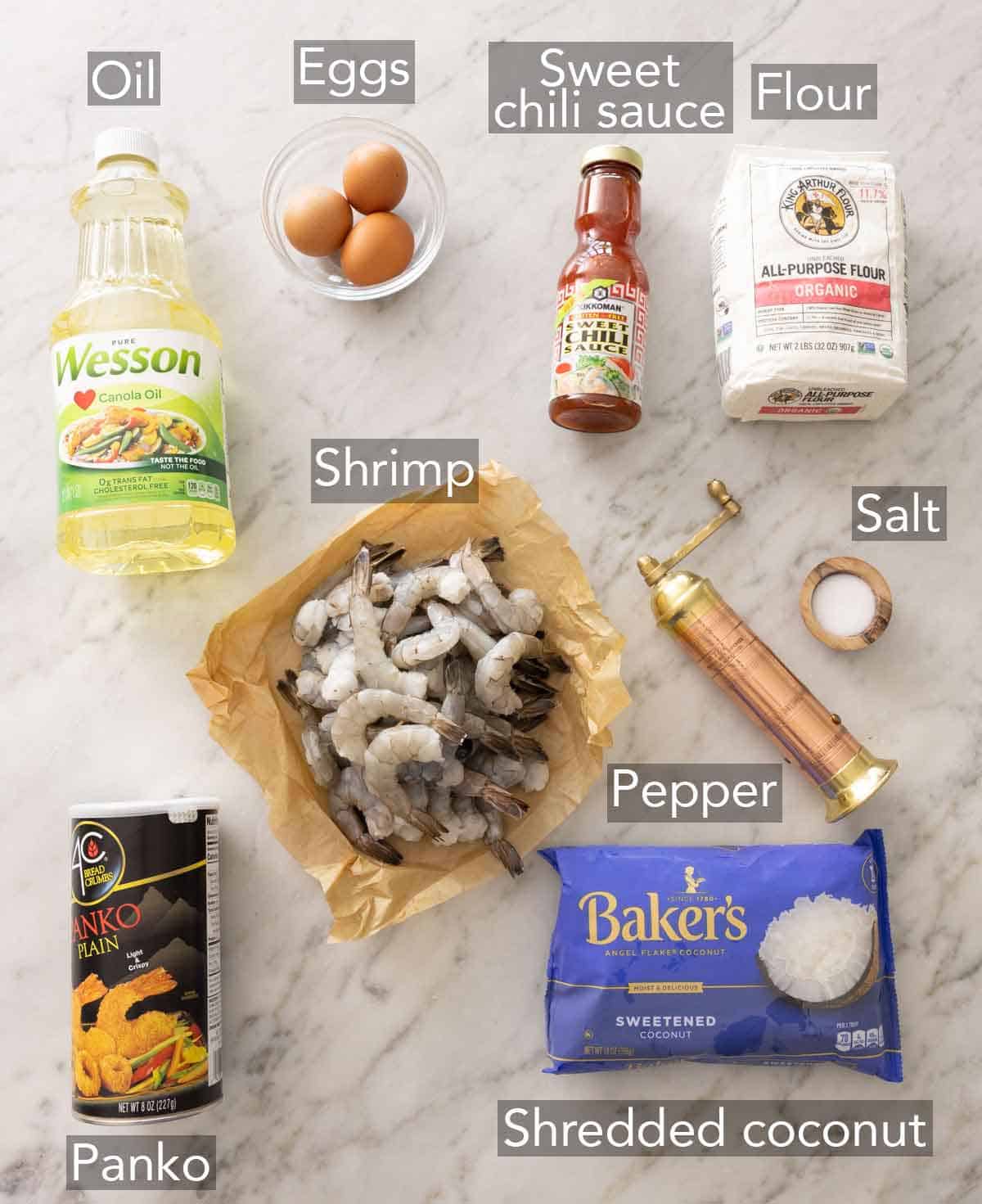
Panko — for an extra crispy crust, I mix panko breadcrumbs with the shredded coconut. Panko produces a lighter and crunchier crust as they absorb less oil than traditional breadcrumbs.
Shrimp — you can purchase shrimp that have already been deveined and peeled to cut down on prepping time. You can use both fresh and frozen shrimp, but you must fully thaw the frozen shrimp before using it. The larger the shrimp, the better!
Sweetened shredded coconut — this can usually be found in the baking aisle. It adds a delicious coconut flavor to the shrimp as well as a crispy texture.
HOW TO MAKE COCONUT SHRIMP
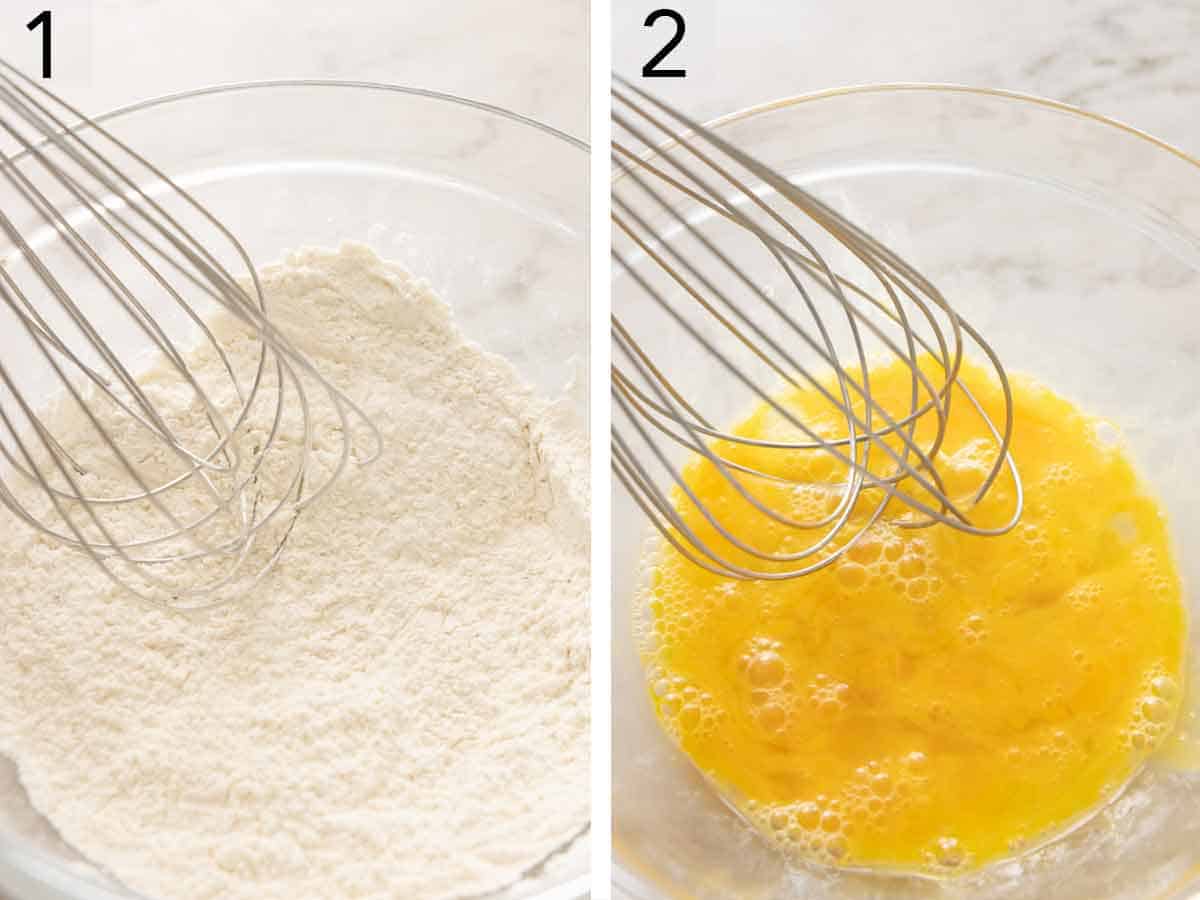
1. In a shallow dish, whisk together the flour, salt, and pepper.
2. In a separate shallow dish, beat the eggs.
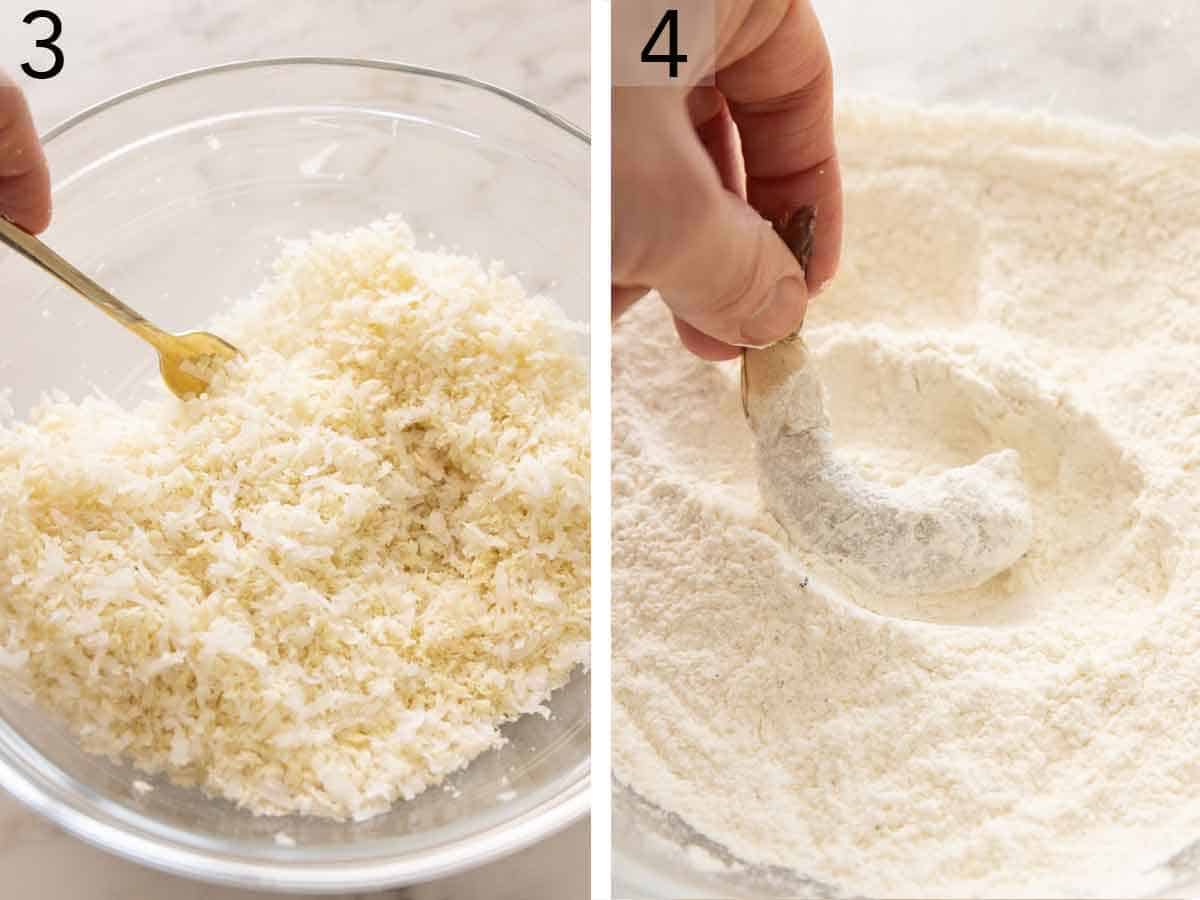
3. In another shallow dish, stir together breadcrumbs and coconut.
4. While holding by the tail, dredge each shrimp in the flour mixture and shake to remove any excess.
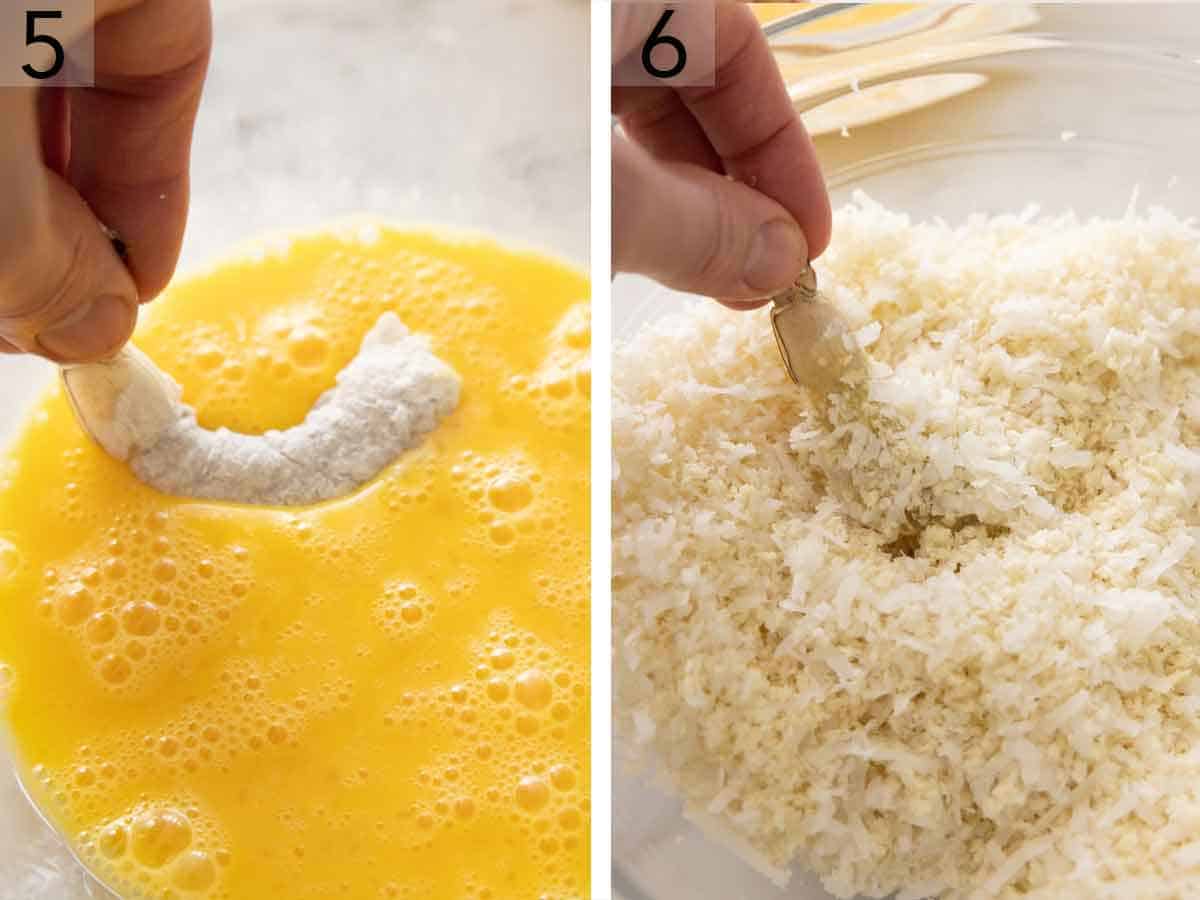
5. Dip the shrimp into the beaten eggs.
6. Coat the shrimp in the coconut mixture.
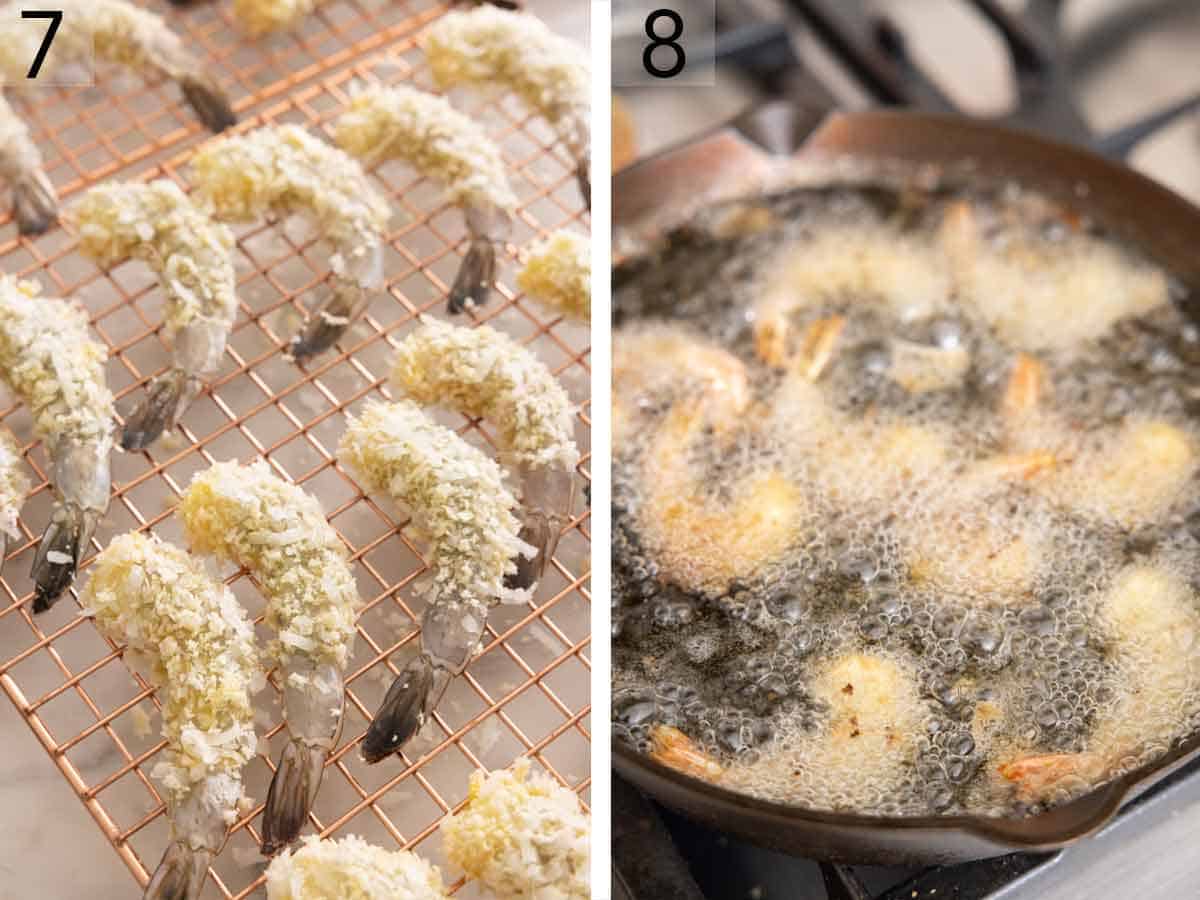
7. Place the coated shrimp on a wire rack as you work through the rest of them.
8. In a large cast-iron skillet, pour oil and heat over medium-high until it’s 350F. Working in batches, add shrimp to the oil. Fry, turning as needed, until golden brown. Let drain on a paper towel-lined plate, continue frying with the remaining shrimp. Serve with sweet chili sauce.
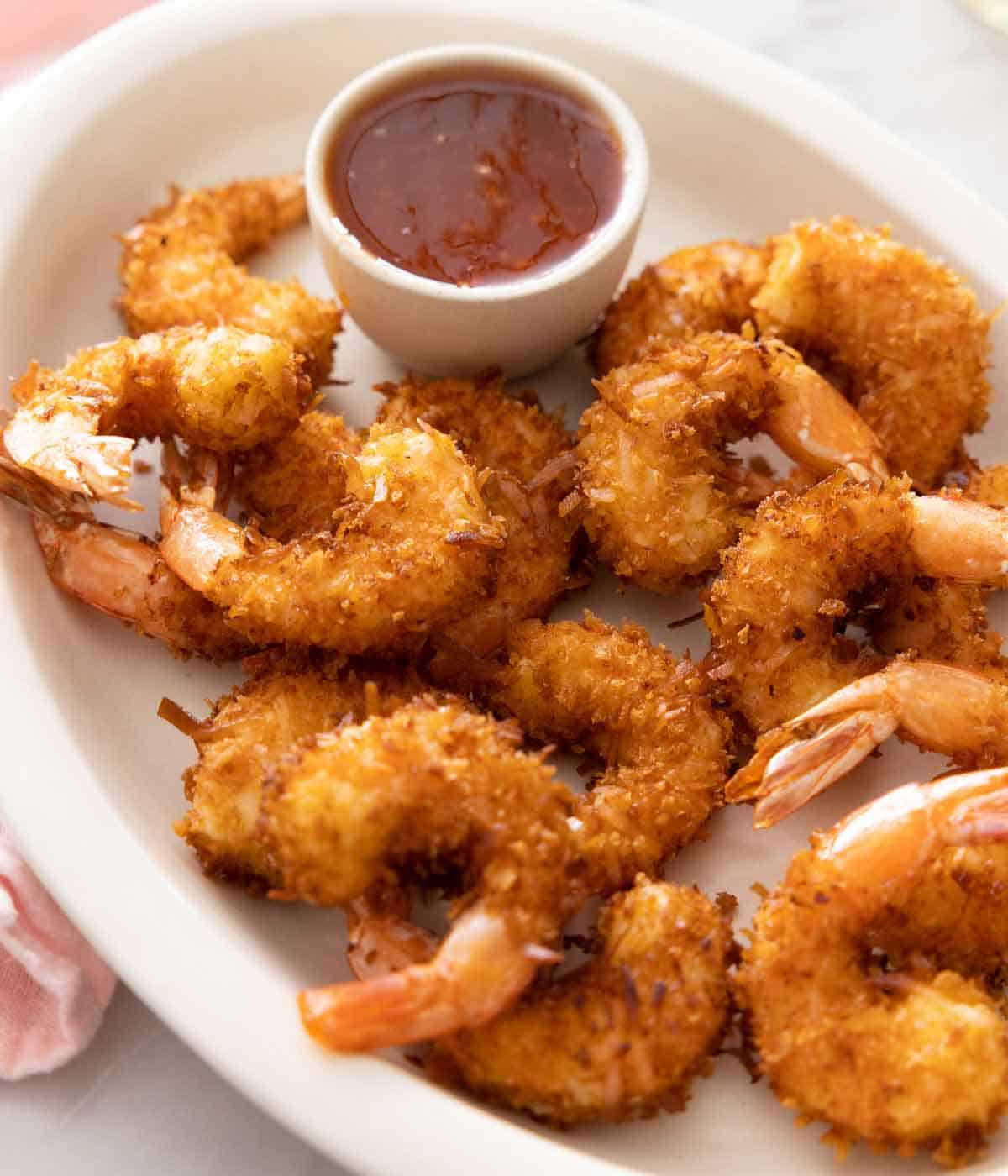
PRO TIPS FOR MAKING THIS RECIPE
- Handle coated raw shrimp by the tails to avoid messing up and potentially removing the coating of the shrimp.
- A thermometer is a great tool to help get the temperature of the oil right. If the oil is too hot, the coating on the shrimp will burn before the interior cooks.
- Avoid adding too many shrimps into the oil at once, as it will cause the temperature of the oil to drop.
- I highly recommend you use a cast iron pot or skillet to fry the coconut shrimp in. The cast iron will help the oil temperature from fluctuating too much and help keep the cooking even. Use an oven mitt as the handle of the cast iron will be hot.
- You can reuse the frying oil at least one to two more times by allowing it to cool and straining it through a fine mesh sieve.
- If working with thawed frozen shrimp, pat the shrimp dry before coating it in the flour mixture. If the shrimp is damp, the coating won’t stick well.
- Avoid using oil with a low-smoke point as the oil will burn and leave the shrimp with an unpleasant taste.
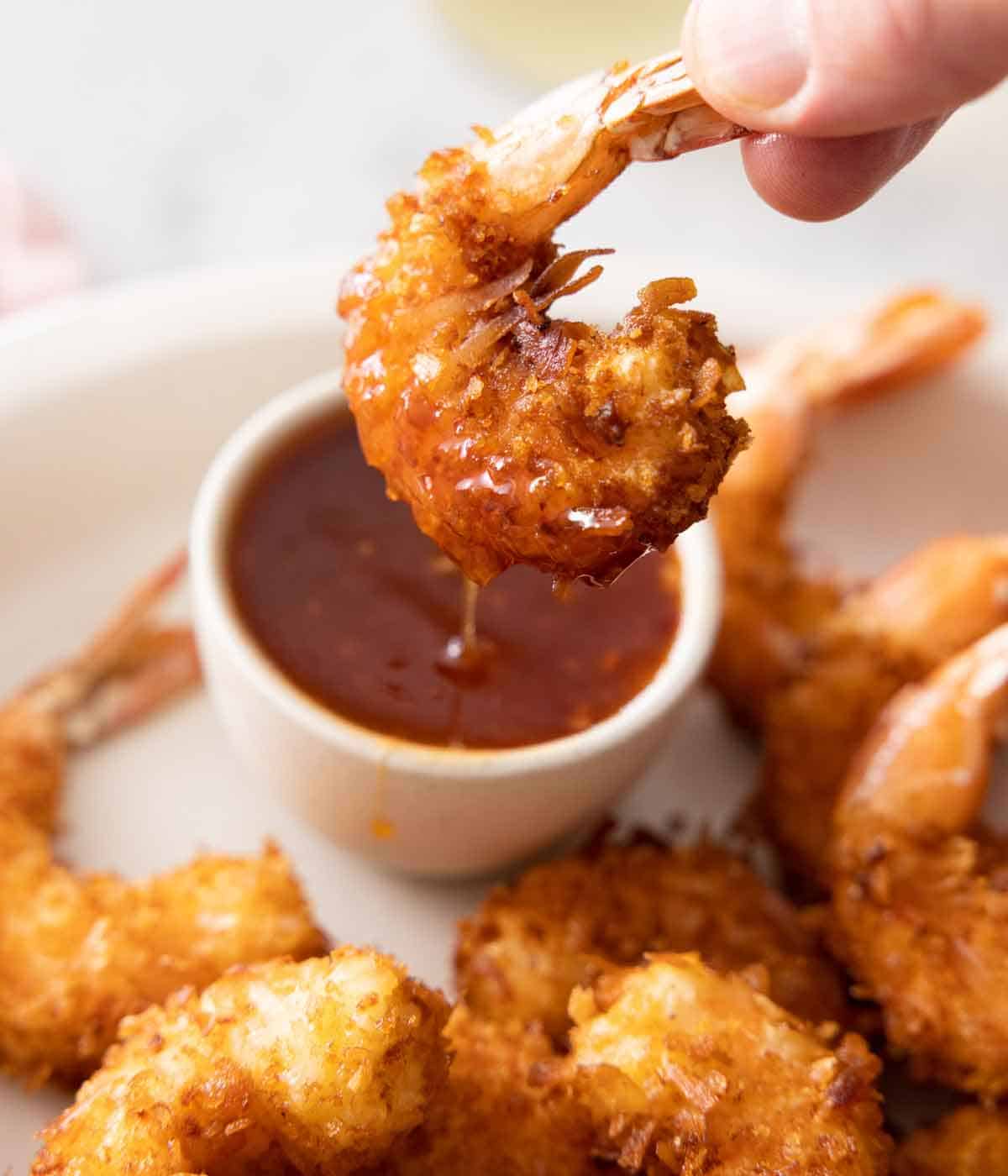
FREQUENTLY ASKED QUESTIONS
How do I quickly thaw frozen shrimp?
Not to worry if you forgot to thaw your shrimp overnight in the fridge. To quickly thaw frozen shrimp, place it into a sealed bag and place it in a bowl of cold water for 10 to 20 minutes. Change the water once it’s no longer cold.
How do I peel and devein shrimp?
Start by removing the head and legs of the shrimp. Start removing the shell, where the legs were attached, and carefully pull off the shell. Leave the tail on the shrimp. Slice the shrimp’s back and use a toothpick to lift and discard the vein using a small knife.
What goes with this recipe?
From pasta to rice, these coconut fried shrimp goes with pretty much everything! My favorite dishes to serve alongside the shrimp are mango salsa, pineapple salsa, macaroni salad, and chicken fried rice.
How do I store leftover shrimp?
Store leftover coconut shrimp in the fridge for up to 3 days in an airtight container. Fried shrimp freezes well too. Place the shrimp in a freezer-safe bag once they’ve cooled and freeze for up to 2 months.
If you’ve tried this Coconut Shrimp recipe, then don’t forget to rate the recipe and let me know how you got on in the comments below, I love hearing from you!
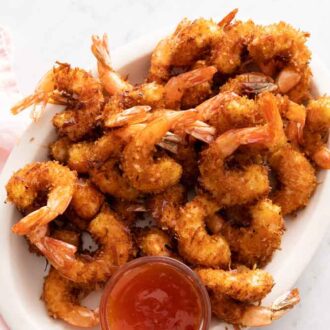
Coconut Shrimp
Video
Equipment
- Cast iron skillet
Ingredients
- 1 cup all-purpose flour (120g)
- ¾ teaspoon salt
- ¼ teaspoon ground black pepper
- 3 large eggs beaten
- 1¼ cups panko breadcrumbs (70g)
- 1¼ cups shredded sweetened coconut (125g)
- vegetable oil for frying
- 2 pounds large fresh shrimp peeled and deveined, with tails left on (900g)
- sweet chili sauce for dipping
Instructions
- In a shallow dish, whisk together the flour, salt, and pepper. In a separate shallow dish, place beaten eggs. In another shallow dish, stir together breadcrumbs and coconut.
- Line a plate with paper towels.
- While holding by the tail, dredge each shrimp in the flour mixture and shake to remove any excess. Dip in eggs, then coat in coconut mixture, and place on a wire rack.
- In a large cast-iron skillet, pour oil to a depth of 1-inch. Heat over medium-high until a deep-fry thermometer registers 350F.
- Working in batches, add shrimp to the oil. Fry, turning as needed, until golden brown, about 1 to 2 minutes. Let drain on a paper towel-lined plate, continue frying with the remaining shrimp. Serve with sweet chili sauce.
Notes
- Handle coated raw shrimp by the tails to avoid messing up and potentially removing the coating of the shrimp.
- A thermometer is a great tool to help get the temperature of the oil right. If the oil is too hot, the coating on the shrimp will burn before the interior cooks.
- Avoid adding too many shrimps into the oil at once, as it will cause the temperature of the oil to drop.
- I highly recommend you use a cast iron pot or skillet to fry the coconut shrimp in. The cast iron will help the oil temperature from fluctuating too much and help keep the cooking even. Use an oven mitt as the handle of the cast iron will be hot.
- You can reuse the frying oil at least one to two more times by allowing it to cool and straining it through a fine mesh sieve.
- If working with thawed frozen shrimp, pat the shrimp dry before coating it in the flour mixture. If the shrimp is damp, the coating won’t stick well.
- Avoid using oil with a low-smoke point as the oil will burn and leave the shrimps with an unpleasant taste.



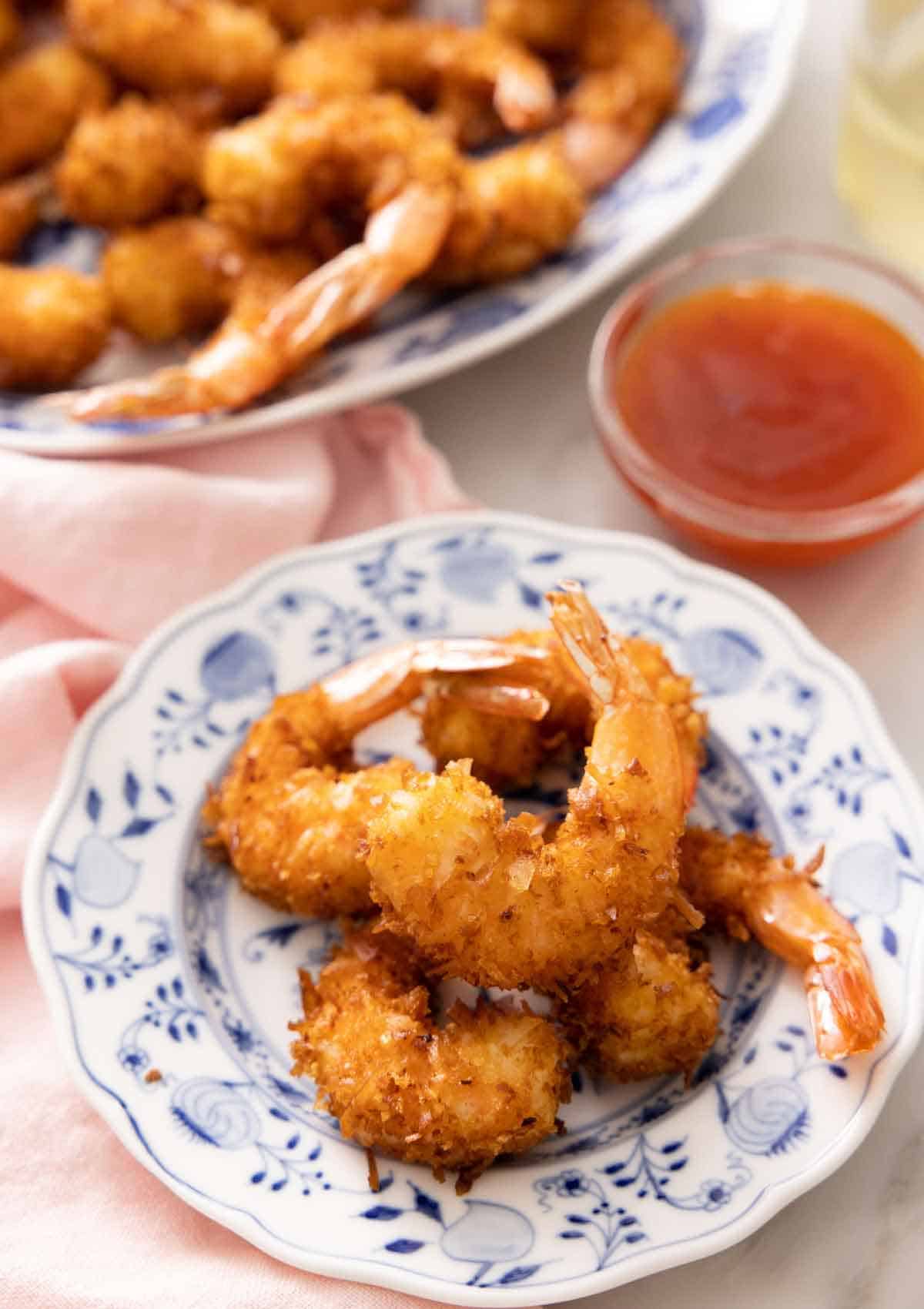



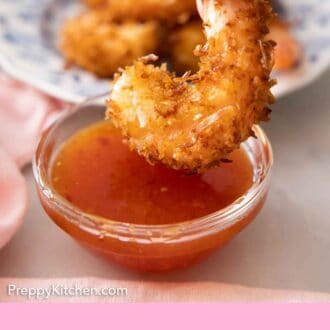
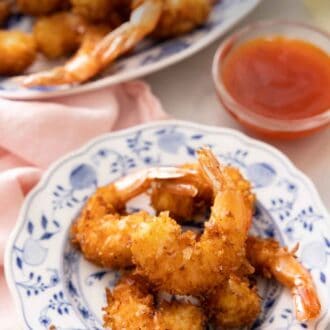


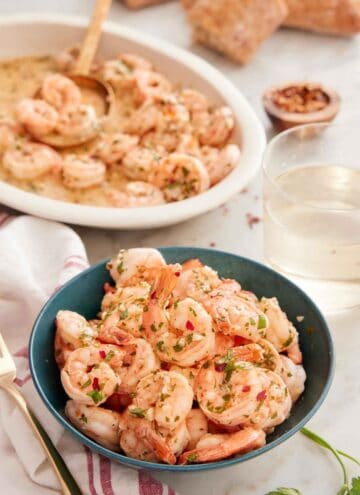
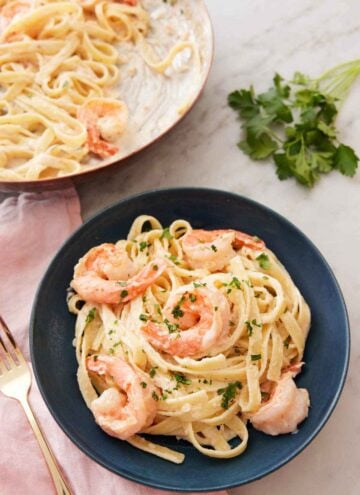
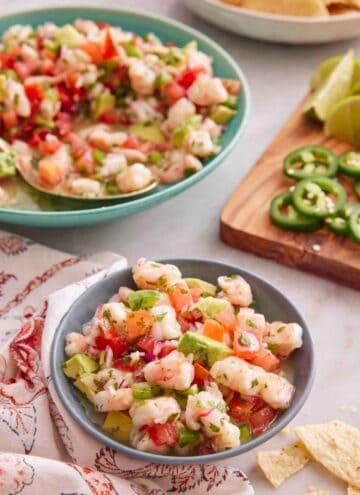
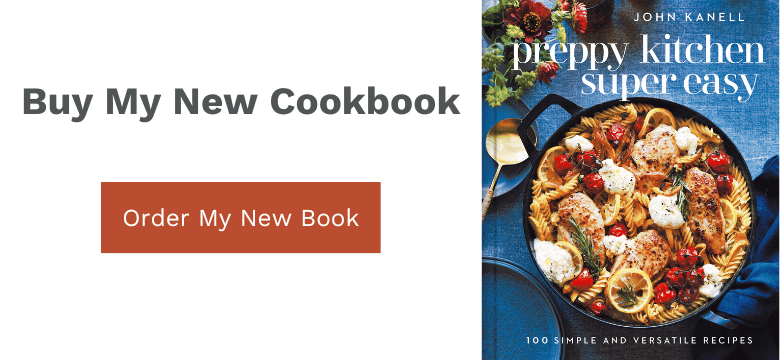
Leave a Reply